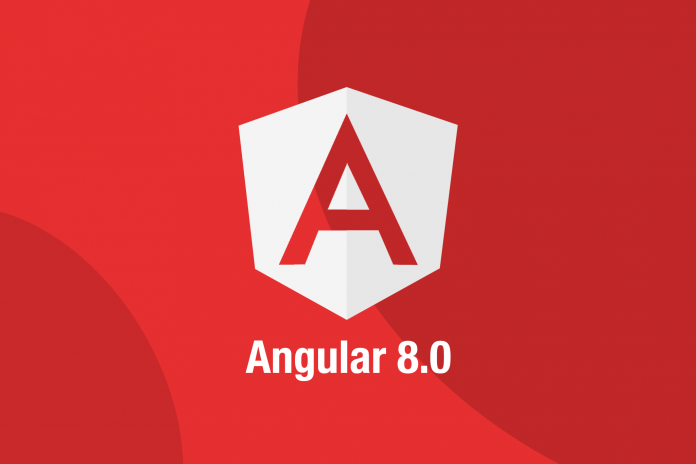Angular 8 Interview Questions | Most Asked Questions For Interview
This is Angular 8 Interview Questions Set 1
#1 What is the main difference between Angular 8 and Angular 7?
The main difference between Angular 8 and Angular 7 are as follows:
| Angular 8 | Angular 7 |
| Angular 8 was released on May 28, 2019. | Angular 7 was released on October 18, 2018. |
| Angular 8 supports TypeScriptversion 3.4. Added support for SASS. | Angular 7 supports TypeScript version 2.9. |
| Ivy is the newly added compilerin Angular 8. | Compatibility Compiler is the newly added compiler in Angular 7. |
| This version makes Angular developer life easier and it is very easier and faster to use. | It is the major release in Angular and expands the entire platform with CLI, Angular material, etc. |
| Added Navigation type availabl during the Navigation in the Router. | Added a new interface known as a Bootstrap interface. |
| Added ng-command to build new projects using Bazel. | Introducing a new Pipe called a KeyValuePipe. Added new mapping elements. |
#2 What is Angular 8?
Angular 8 is the latest version which is released on May 28, 2019, by the Angular community. It is the most prominent client-side TypeScript based framework that is mainly used to create dynamic web applications. Angular 8 is very much similar to the previous version of Angular but has some more added features. You can even upgrade your Angular CLI to Angular version 8 very easily.
#3 List the key features of Angular 8?
The key features of Angular 8 are as follows:
- Differential Loading to create two different production bundles of your app.
- New Dynamic Lazy Loading modules for imports.
- Supports Web Workers.
- Supports TypeScript version 3.4.
- Availability of New Workspace APIs and Builder.
- Bazel Support.
- Opt-In usage sharing.
- Ivy Rendering Engine: The new compiler for Angular version 8.
- ngUpgrade improvements.
#4 Explain the difference between `Promise` and `Observable` in Angular?
Promises:
- return a single value
- not cancellable
- more readable code with try/catch and async/await
Observables:
- work with multiple values over time
- cancellable
- support map, filter, reduce and similar operators
- use Reactive Extensions (RxJS)
- an array whose items arrive asynchronously over time
#5 Do Angular 8 support the TypeScript version 3.4?
Yes, Angular version 8 supports TypeScript 3.4 because it is mainly used to run the Angular 8 projects. Everything in Angular version 8 is written in TypeScript. So you need to upgrade your TypeScript version to 3.4. This is an important Angular 8 Interview Questions
#6 What is the main purpose of a Bazel in Angular 8?
Bazel is one of the key features present in Angular version 8. It always allows you to build CLI applications quickly. Bazel is considered a built tool that is developed and mostly used by Google as it can build applications in any language. The entire Angular framework is built with Bazel. Moreover, Bazel allows you to break an application into different build units which are defined at the NgModule level.
#7 What is the purpose of Codelyzer in Angular 8?
Codelyzer in Angular version 8 is the open-source tool that is present on the top of the TSLint. The main purpose of Codelyzer is to verify whether the Angular TypeScript 3.4 projects are following the set of linting rules or not. It mainly focuses on the static code in Angular TypeScript. In simple words, we can say that the main purpose of the Codelyzer in Angular version 8 is to check the quality and correctness of the program.
#8 What is the purpose of Wildcard Route in Angular 8?
The main purpose of the Wildcard Router in Angular version 8 is to match every URL as an instruction to get a clear client-generated view. This Wildcard route always comes last as it needs to perform its task at the end only. It is mainly used to define the route of the pages in Angular 8.
#9 Why should `ngOnInit` be used, if we already have a `constructor`?
The Constructor is a default method of the class that is executed when the class is instantiated and ensures proper initialization of fields in the class and its subclasses.
- ngOnInit is a life cycle hook called by Angular2 to indicate that Angular is done creating the component.
Mostly we use ngOnInit for all the initialization/declaration and avoid stuff to work in the constructor. The constructor should only be used to initialize class members but shouldn’t do actual “work”. So you should use constructor() to set up Dependency Injection and not much else. ngOnInit() is better place to “start” – it’s where/when components’ bindings are resolved.
#10 What is the use of Event Binding in Angular 8?
Event Binding technique is mainly used to handle the events that are raised from DOM like mouse move, button click, and many more in Angular version 8. When the DOM event occurs, at that moment only the specified method is called in the component.
#11 What is Data Binding in Angular 8?
Data Binding in Angular version 8 is considered as the key concept, that is mainly used to build the communication between the DOM and the TypeScript code of your component. It is the most prominent technique used to link your data to the view layer. Data Binding also defines interactive applications very quickly and easily. It can be achieved either by one-way binding or two-way binding. This is an important Angular 8 Interview Questions
#12 What is the need for Angular 8 components?
The components in Angular 8 are the list of classes with decorators that mainly mark their own types and provide metadata to guide Angular to do things. Every application in Angular has at least one component called a root component. This root component is mainly used to connect page hierarchy with page DOM.
#13 What is AOT?
The Angular Ahead-of-Time compiler pre-compiles application components and their templates during the build process. Apps compiled with AOT launch faster for several reasons.
- Application components execute immediately, without client-side compilation.
- Templates are embedded as code within their components so there is no client-side request for template files.
- You don’t download the Angular compiler, which is pretty big on its own.
- The compiler discards unused Angular directives that a tree-shaking tool can then exclude.
#14 What is the main purpose of Angular 8 forms?
Ans: The main use of Angular 8 forms is to handle the user’s input. These forms can also be used in your applications to enable the user to log in, enter personal info, update profile, perform various tasks related to data entry, and many more. Basically, there are two approaches to handle the user’s input by using forms. The two approaches are used to collect the user inputs from the view layer and they also provide the way to track different changes.
#15 What are the advantages of Angular 8?
Ans: The following are the advantages of Angular 8, and they are as follows:
- Higher performance
- Effective clean code development
- debugging templates
- Angular 8 supports multiple apps in a single domain.
- easier implementation.
Angular 8 Interview Questions
#16 What is the Purpose of String Interpolation in Angular 8?
String Interpolation in Angular version 8 comes under the one-way Data Binding technique, it is mainly used to output or extract the data from a TypeScript coding to HTML template view layer. It represents the data from the component to view layer in the form of curly braces. This interpolation technique adds the value of property to the component.
Example for String Interpolation is {{data}}
#17 What is the syntax to create an app in Angular 8?
The syntax to create an application in Angular version 8 is
ng new app_name
Ans: The npm install -g @angular/cli is the command used to install Angular CLI.
#18 What is an Angular Universal?
The Angular Universal is defined as the process of SSR (server-side rendering) of your particular application to HTML present on the Server. Basically, all the Angular applications are single-page applications so the rendering always occurs on the browser. The entire process of rendering single-page applications is known as the client-side rendering process (CSR).
#19 What is Ivy in Angular 8?
Ivy in Angular version 8 is considered as the Rendering Engine. It was released in Angular 8 as Opt-in. It has opted as the code name for Angular’s next-generation rendering pipeline and compilation. By default, Ivy is intended to be the rendering engine in Angular 9
#20 What are the limitations of web workers in Angular 8?
The web workers in Angular version 8 are mainly used to speed up the work of the things in your application during the working of CPU. These web workers mainly allow you to run the CPU computations in a background thread. This, in turn, helps the main thread to free up and then update the user interface.
Check it out Latest Jobs for Angular Developer: Click here
If You Want To Get More Daily Such Jobs Updates, Career Advice Then Join the Telegram Group From Given Link And Never Miss Update.
Join Telegram Group of Daily Jobs Updates for 2010-2021 Batch: Click Here
Why You’re Not Getting Response From Recruiter?: Click here
How To Get a Job Easily: Professional Advice For Job Seekers: Click here
Cognizant Latest News: Up To 20K+ Employees Will Be Hired: Click here
COVID-19 Live Tracker India & Coronavirus Live Update: Click here
Why Remove China Apps took down from Play store?: Click here
Feel Like Demotivated? Check Out our Motivation For You: Click here
List of Best Sites To Watch Free Movies Online in 2020: Click here
5 Proven Tips For How To Look Beautiful and Attractive: Click here






















